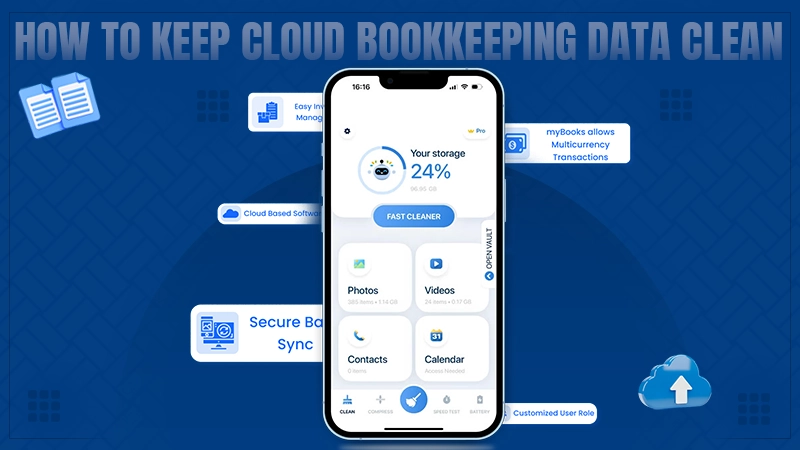A DSCR loan can be granted for three different terms, such as 15 years, 30 years, and 40 years. Remember that these terms can vary depending on the terms and conditions of different lenders.
Financing products is crucial and helpful for real estate investors. With the complexities and restrictions of traditional property loans, investing in properties has become challenging. That is when the DSCR loans come forward. These loans evaluate the cash flow ability of the property for repayment rather than the borrower’s income.
But this doesn’t mean that anyone can borrow this loan. You must understand and fulfill various DSCR loan requirements to approve the loan amount. Thus, we have come here to provide an overview of all the requirements and the application process for loan granting.
Overview of the DSCR Loan

DSCR, or debt service coverage ratio, is a financial mortgage product for lending money to customers, mainly for real estate investments. Rather than focusing on the borrower’s income, a DSCR loan is granted after analyzing and evaluating the cash inflow from the loan money.
This loan calculates the annual gross rental income of the property against the total amount of the loan granted (the principal amount, interest, tax, insurance, and homeowner association (if applicable).
| Debt Service Coverage Ratio = Annual gross rental income of the property / Loan amount |
Requirements of the DSCR Loan
There are certain requirements that borrowers are required to fulfill to qualify for the DSCR loan amount. Here, we have provided all the requirements for the DSCR loan:
1. Decent Credit Score
A credit score is a number assigned by the credit bureau to define the creditworthiness of borrowers. This score ranges from 300 to 850, depending on the credit history of the borrower.
To qualify for a DSCR loan, an interested party must have a credit score of 620 or above. This benchmark is set as an assurance that the borrower with this credit score will surely pay back his or her liability. Applicants with more than a 650 score can get better terms for repayment.
Remember that a credit score lower than 620 doesn’t mean disqualification. Lenders might need you to fulfill some additional requirements, such as a strong cash flow and valuable collateral.
2. Acceptable Debt Service Coverage Ratio
The debt service coverage ratio is one of the most crucial metrics for evaluating the borrower’s loan repayment ability. It is calculated by dividing the annual rental income of the property by the amount of the debt borrowed. A debt service coverage ratio of 1.25 is considered easily viable and mandatory by financial institutions for commercial loans.
To easily avail of a DSCR loan, borrowers should focus on increasing net operating income from their annual debt service payments, reducing expenses, and improving expenses. It can help borrowers get better loan offers and terms on the repayment of the loan amount.
3. Property Condition
DSCR loans are specially designed to assist real estate investors in growing their coverage and business. These investors utilize DSCR loans mostly for single-family homes, duplexes, triplexes, quads, condos, apartment buildings, and mixed-up properties. However, not all lenders grant loan amounts on all kinds of real estate properties.
Some lenders serve borrowers for single-family homes, duplexes, triplexes, and quads, whereas others provide loans for condos, apartment buildings, and mixed-up properties. Financial institutions can’t lend loan amounts for properties primarily for residence. Thus, make sure you understand the lender’s DSCR loan requirement before applying.
4. Status of Reserves
Like various other kinds of loans, DSCR loans also require a certain reserve from the borrower. This amount varies depending on the lender. For example, some lenders set this amount to be worth six months of payments, whereas others want their borrowers to keep only three months of payment reserves. This requirement is set by lenders to ensure the complete retrieval of their loan money.
5. Loan-to-Value (LTV) Ratio
Loan-to-value is the ratio of the lent money to the total value of the property. For example, if a property is worth $50,000 and the lender has lent $40,000 on the property, the LTV ratio would be 75%. This means that the borrower has to pay the remaining 25% of the property as a down payment. Most lenders provide loans for 70%–75% of the properties. This implies that 25%–30% are the DSCR loan down payment requirements.
Before processing your real estate deal, make sure that the amount of the LTV ratio fulfills your fund requirement.
6. Documentations
Although the borrower doesn’t need to provide any income documentation, some other documents are required. Here are the following documents that are mandated for DSCR loans:
- The credit report of the borrower.
- Leases of property.
- Income forecast for the property.
- Financial statement for commercial loans.
All these documents are required for lending money, as they showcase the ability of borrowers to manage their investments.
7. Number of Loaned Properties
Owning multiple properties and real estate is common for direct real estate investors. There are possibilities that the borrower is lending money for almost all of his/her owned properties. Therefore, lenders set the DSCR loan requirement to restrict investors from financing multiple properties, only up to the creditworthiness of the borrower.
8. Cash Flow
Cash flow refers to the inflow and outflow of cash in the business. Businesses taking out DSCR loans for real estate investments should make sure to effectively manage their cash flow. This includes actively engaging in both cash inflow and cash outflow activities to manage adequate cash availability for real estate investments.
Investors are required to perform this assessment as cash flow affects the loan amount of the DSCR loan. Lenders evaluate the liquidity of the borrower and grant the loan amount depending on the availability of cash reserves.
9. Business Plan
For businesses that invest in real estate, lenders can ask for a presentation of the business plan. A strong and well-established business plan can help convince the lender that the borrower is dedicated to the business and can successfully make repayment of the loan amount.
This includes providing detailed information about the business, like products, services, descriptions, marketing strategies, and a financial budget. Make sure to highlight the recent milestones or achievements to convince the lender to grant the loan.
How to Get a DSCR Loan?
Here we have covered the whole application process for taking a DSCR loan for real estate investment:
- Searching lenders: The first and foremost step in the DSCR loan process is searching for the most suitable lender for your loan. You can look out for one on the Internet or ask for one from other real estate professionals. Upon finding one for yourself, ask for any specific requirements for loan approval, as some lenders set their requirements.
- Assessment of the application: After the search process is completed, the lender will ask for information related to the property. This is done to assess the property for any potential risk. Once the assessment is completed, the lender will outline the loan details, such as loan amount, terms, fees, etc.
- Collecting documents: The third step is gathering all the relevant documents, like credit reports, financial statements, leases of property, and cash flow statements.
- Paperwork submission and loan granting: The next and final step is concerned with submitting the DSCR loan application. After getting approval for the loan, the lender sends the terms and conditions of the loan, such as interest rates, monthly repayments, terms of the loan, and closing costs.
Conclusion
The DSCR loans are one of the best products for real estate investors, as they are approved after considering the income potential of the property rather than the personal income of the borrower. They just need to qualify for the DSCR loan requirements, such as credit score, DSCR, LTV ratio, cash flow, etc.
Appropriately presenting these can increase your chances of approving the DSCR loan amount.








